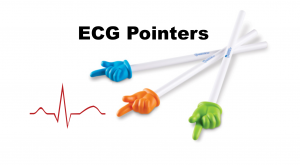Originally published at Pediatric EM Morsels on March 6, 2015. Reposted with permission.
Follow Dr. Sean M. Fox on twitter @PedEMMorsels
Fortunately, the critically ill child is not as common in the Emergency Department as the critically ill adult. Unfortunately, when the critically ill child does arrive, it can be challenging to recognize him/her initially. This can lead to delays in resuscitation care. Even at the extreme point of being pulseless, children can be tricky (SeePalpation of Pulse). Then there is always the challenge that having to account for the effect that age has on normal vital signs (See Blood Pressures). Often, though, by focusing on the Basics, we can met the challenge of detecting Pediatric Shock and act aggressively to treat it!
Pediatric Shock
- Broadly speaking, shock is the state in which there is a failure to meet the metabolic demands of the body leading to anaerobic metabolism. (Mtaweh, 2013)
- Often categorized as:
- Hypovolemic
- Cardiogenic
- Distributive
- Toxin mediated – Septic
- Hypersensitivity reaction – Anaphylaxis
- Loss of sympathetic tone – Neurogenic
Pediatric Shock: A Challenge
- The diagnosis is initially suspected based upon clinical exam.
- There is no lab value or “test” that defines shock. (See Lactate)
- Clinical Findings:
- Tachycardia
- Must account for age-adjusted values!
- Often children present with elevated heart rates without overt illness.
- Poor Capillary Refill
- Normal capillary refill can vary with age and is influenced by the environment. (Schriger, 1988)
- The initial cap refill in the ED, may artificially affected by the pre-hospital environment.
- Peripheral Pulse Quality
- Altered Mental Status
- Cold/Mottled Extremities
- Poor Urine Output
- Not likely useful in the initial assessment in the ED.
- If the patient is “hanging out” in your ED for some time, monitor this!
- Tachycardia
- Of these clinical findings, only Altered Mental Status and Poor Peripheral Pulse Quality was associated with development of Organ Dysfunction. (Scott, 2014)
- No single finding defines shock, but the absence of all of them is reassuring.
Pediatric Shock: The Shock Index
- The Shock Index (Heart Rate / Systolic BP) has been shown to be useful in detecting adult patients with shock.
- There is evidence that the Shock Index can be useful in pediatric patients also. (Yasaka, 2013; Rousseaux, 2013)
- Since, pediatric vital signs alter with age, it would make sense to have a“adjusted” tool. (Acker, 2015)
- Using standard heart rate and systolic BP values for age ranges, Maximum Normal Shock Index values were calculated.
- Shock Index, Pediatric Adjusted (SIPA)
- 4-6 years = 1.2
- 6-12 years = 1
- > 12 years = 0.9
- Comparing the patient’s actual HR / Systolic BP to the SIPA was shown to perform better and identify those most severely injured following blunt trauma. (Acker, 2015)
- Obviously, this may not apply to all pediatric patients presenting with shock, but I do like the concept of utilizing Basic information that is age adjusted.
- Consider utilizing this tool as another method to help find those subtle presentations of shock. Remain Vigilant!






